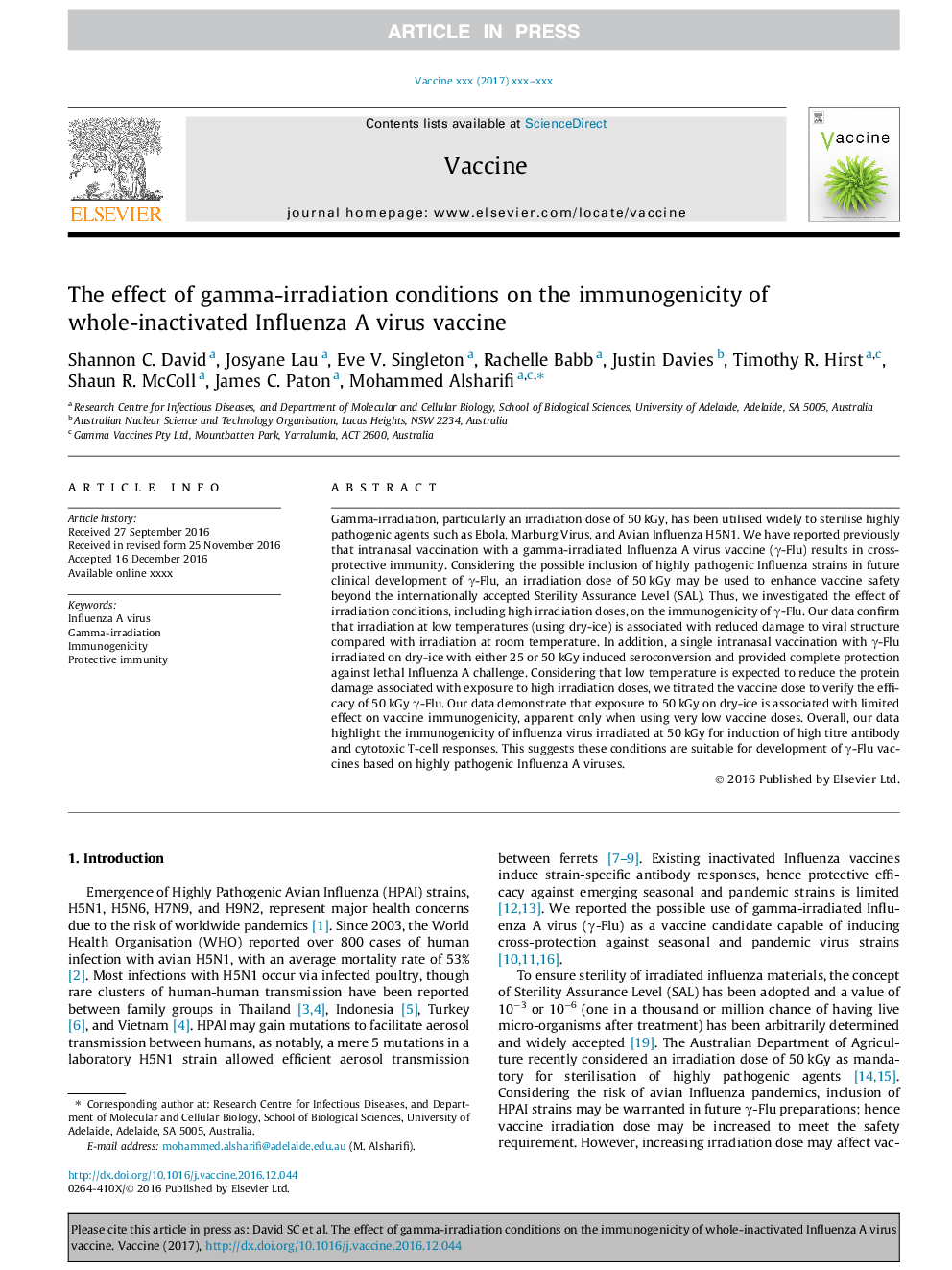| Article ID | Journal | Published Year | Pages | File Type |
|---|---|---|---|---|
| 5536595 | Vaccine | 2017 | 9 Pages |
Abstract
Gamma-irradiation, particularly an irradiation dose of 50 kGy, has been utilised widely to sterilise highly pathogenic agents such as Ebola, Marburg Virus, and Avian Influenza H5N1. We have reported previously that intranasal vaccination with a gamma-irradiated Influenza A virus vaccine (γ-Flu) results in cross-protective immunity. Considering the possible inclusion of highly pathogenic Influenza strains in future clinical development of γ-Flu, an irradiation dose of 50 kGy may be used to enhance vaccine safety beyond the internationally accepted Sterility Assurance Level (SAL). Thus, we investigated the effect of irradiation conditions, including high irradiation doses, on the immunogenicity of γ-Flu. Our data confirm that irradiation at low temperatures (using dry-ice) is associated with reduced damage to viral structure compared with irradiation at room temperature. In addition, a single intranasal vaccination with γ-Flu irradiated on dry-ice with either 25 or 50 kGy induced seroconversion and provided complete protection against lethal Influenza A challenge. Considering that low temperature is expected to reduce the protein damage associated with exposure to high irradiation doses, we titrated the vaccine dose to verify the efficacy of 50 kGy γ-Flu. Our data demonstrate that exposure to 50 kGy on dry-ice is associated with limited effect on vaccine immunogenicity, apparent only when using very low vaccine doses. Overall, our data highlight the immunogenicity of influenza virus irradiated at 50 kGy for induction of high titre antibody and cytotoxic T-cell responses. This suggests these conditions are suitable for development of γ-Flu vaccines based on highly pathogenic Influenza A viruses.
Related Topics
Life Sciences
Immunology and Microbiology
Immunology
Authors
Shannon C. David, Josyane Lau, Eve V. Singleton, Rachelle Babb, Justin Davies, Timothy R. Hirst, Shaun R. McColl, James C. Paton, Mohammed Alsharifi,
